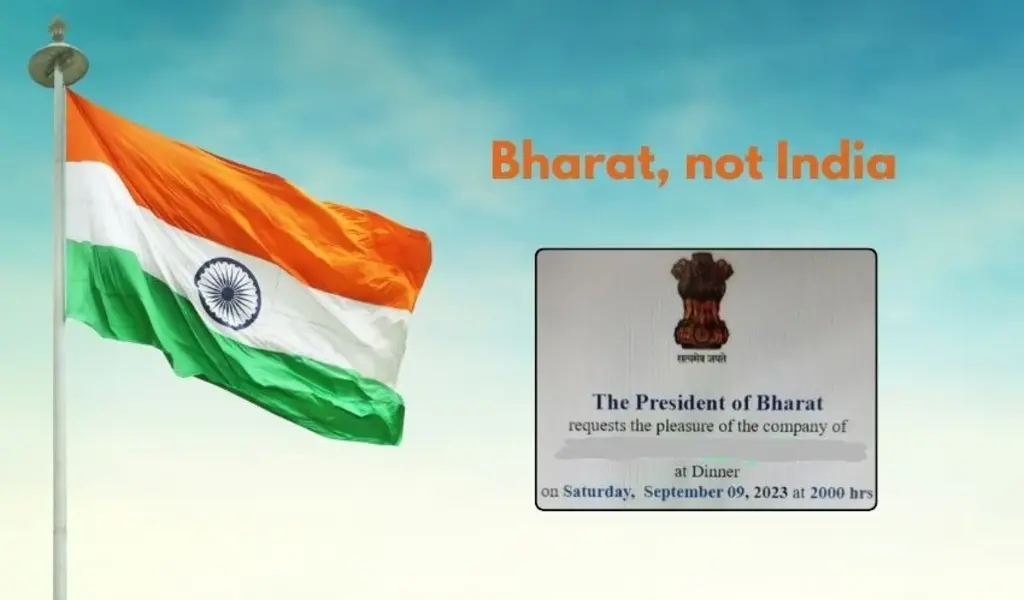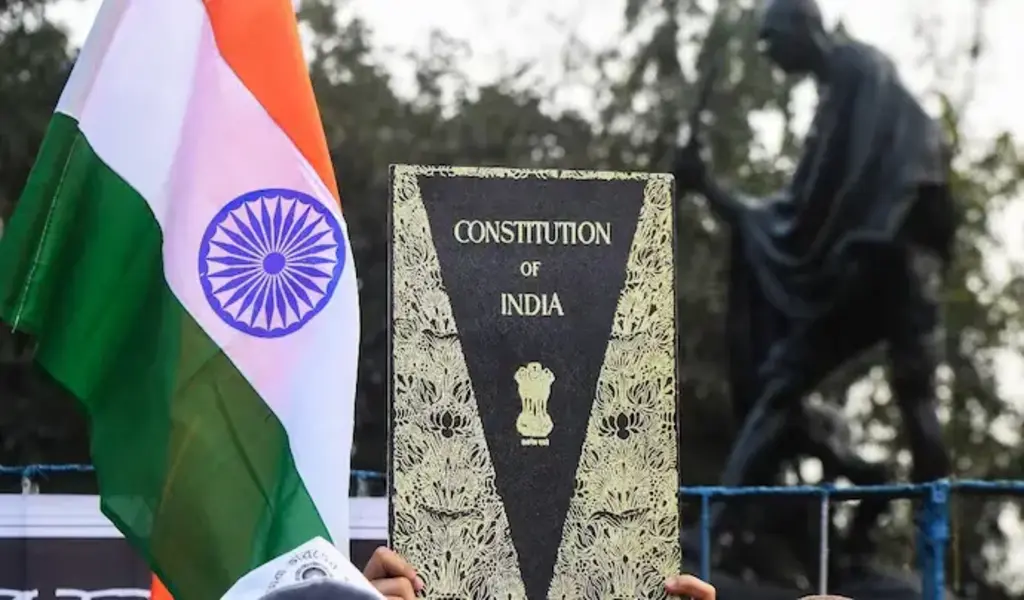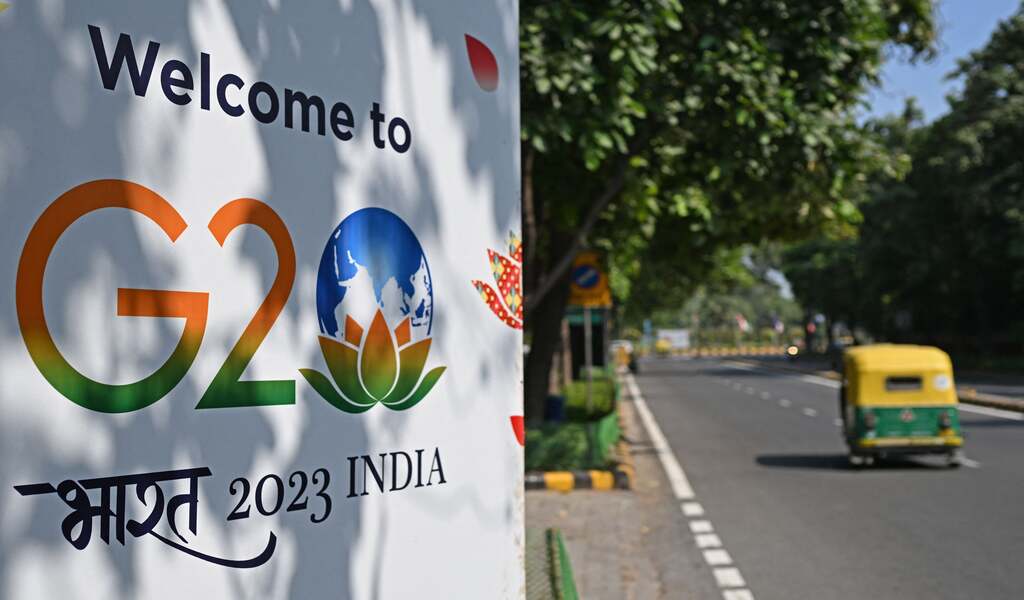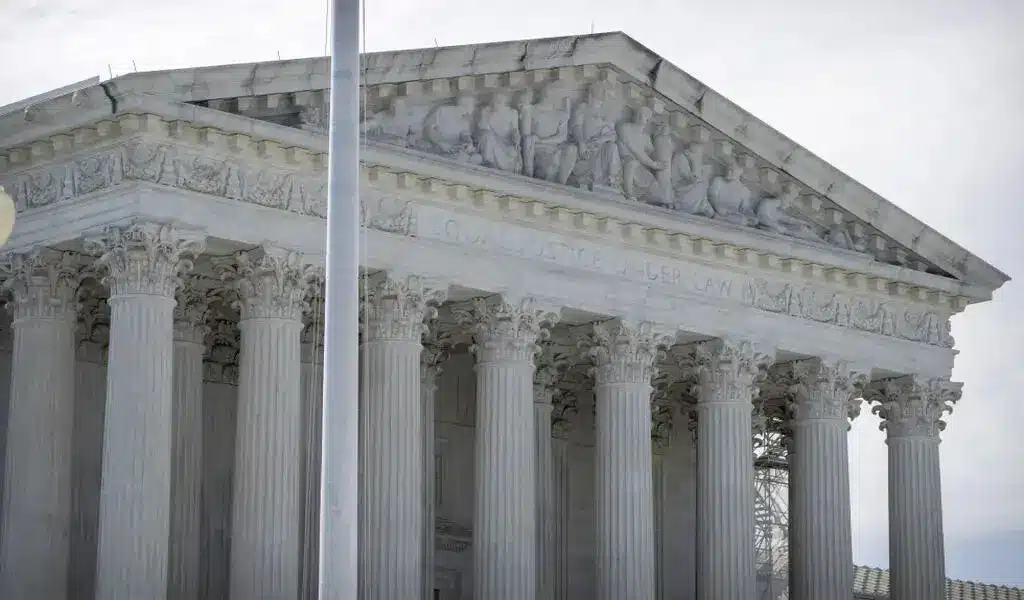News
India vs. Bharat: Supreme Court Rulings And Constituent Assembly Debates | Explained

(CTN NEWS) – A recent controversy has emerged surrounding the potential renaming of India to ‘Bharat,’ with speculations suggesting that this change may occur during a special session of the parliament scheduled for this month.
The debate gained momentum when an official notice regarding Prime Minister Narendra Modi’s upcoming visit to Indonesia for the 20th ASEAN-India and the 18th East Asia summits referred to him as the ‘Prime Minister of Bharat.’
Subsequently, during the G20 Summit on Saturday, the country’s nameplate in front of Prime Minister Narendra Modi displayed ‘Bharat’ instead of ‘India.’
It’s worth noting that the debate over whether to use ‘Bharat’ or ‘India’ to refer to the country is not a recent development.
The constituent assembly responsible for framing India’s constitution engaged in extensive deliberations on this matter after gaining independence. Moreover, there have been several court rulings addressing this issue over the years.

Supreme Court’s Stance on Renaming India to Bharat: Notable Cases and Legal Perspectives
In May 2016, a Supreme Court bench led by the then Chief Justice of India (CJI) TS Thakur dismissed a public interest litigation (PIL) that aimed to change the country’s name from India to Bharat.
The bench strongly rebuked the petitioner for wasting the court’s time, expressing a clear disapproval of the plea.
While rejecting the PIL, the bench remarked, “Bharat or India? If you wish to call it Bharat, feel free to do so. If someone wants to refer to it as India, they may do so.”
A year prior, in 2015, a similar PIL was presented before the apex court, seeking to restrain the Center from using the name “India” for any governmental purposes and in official documents.
The PIL argued that during the Constituent Assembly discussions, various suggestions were made for naming the country, including “Bharat, Hindustan, Hind, and Bharatbhumi or Bharatvarsh.”
“The country has one primary name, historically significant, and that is ‘Bharat.’ The first Article of the Constitution of India explicitly states, ‘India, that is Bharat, shall be a Union of States,’ thereby codifying the name ‘Bharat’ for the Republic of India,” stated the petition.
Likewise, in June 2020, an individual from Delhi filed a plea with the Supreme Court, seeking an amendment to Article 1 of the Constitution to retain only ‘Bharat’ and remove ‘India’ from the country’s name.
The court rejected the petition but allowed the petitioner to submit a representation to the government, while also highlighting that “India is already referred to as Bharat in the Constitution itself.”
The petitioner argued that “Replacing the English name with Bharat, while symbolic, would instill a sense of pride in our nationality, especially for future generations.
In fact, substituting the word India with Bharat would honor the hard-fought freedom achieved by our ancestors.”
Apart from the 2016 case, where the court issued notices to the Center and State governments to seek their responses, there has been limited progress in this direction.

The Constituent Assembly’s Debate on India’s Name: Balancing ‘Bharat’ and ‘India
The constituent assembly engaged in a comprehensive discussion regarding the nomenclature for India during the drafting of the Indian Constitution.
One of the distinguished members of the constituent assembly, KV Kamath, proposed amendments to Article 1. He suggested two alternative formulations.
Firstly, he recommended using “Bharat or, in the English language, India, shall be a Union of States” instead of the original “India, that is Bharat.”
Alternatively, he proposed “Hind, or, in the English language, India, shall be a Union of States” as an alternative definition for the Indian state.
Explaining his rationale behind these amendments, Kamath referred to the Irish Constitution and argued that the phrase “India, that is, Bharat” was somewhat cumbersome and could be improved for constitutional and aesthetic reasons.
Another member of the constituent assembly, Seth Govind Das, advocated strongly for adopting the name “Bharat.” He pointed out that the term “India” did not find mention in ancient Indian texts and was introduced when the Greeks arrived in India.
According to him, “India” was derived from “Indus,” as seen in the naming of the Sindhu River by the Greeks.
In contrast, the name “Bharat” had historical and cultural significance, being referenced in the Vedas, Upanishads, Brahmanas, the Mahabharata, and even the Vishnu Purana and Brahma Purana.
In response to those who argued that using “Bharat” might not be forward-looking, Seth Govind Das referenced the Chinese traveler Hiuen-Tsang, who had referred to India as “Bharat” in his travel book.
He emphasized that embracing the name “Bharat” was not a step backward but rather an acknowledgment of India’s rich history and culture. He argued that such a name would befit the nation’s heritage and traditions.
On the other side of the debate, some members argued in favor of retaining the name “India,” citing reasons of continuity.
Dr. BR Ambedkar, a prominent member of the constituent assembly, asserted that India had been known as India throughout its history and internationally recognized as such.
Therefore, he believed that “India” should be retained as the official name.
Ultimately, after extensive deliberations and discussions, the constituent assembly accommodated both viewpoints. Article 1 of the Indian Constitution defined the country as “India, that is Bharat,” recognizing the historical and cultural significance of both names.
RELATED CTN NEWS:
U.S. Citizens Gather To Commemorate 22nd Anniversary Of 9/11 Across The Nation
[VIDEO]: Morocco’s Earthquake Aftermath: Death Toll Rises As Rescue Efforts Continue
Fall Vaccination Update: New COVID-19 And RSV Vaccines Set To Tackle Triple Threat

News
Google’s Search Dominance Is Unwinding, But Still Accounting 48% Search Revenue

Google is so closely associated with its key product that its name is a verb that signifies “search.” However, Google’s dominance in that sector is dwindling.
According to eMarketer, Google will lose control of the US search industry for the first time in decades next year.
Google will remain the dominant search player, accounting for 48% of American search advertising revenue. And, remarkably, Google is still increasing its sales in the field, despite being the dominating player in search since the early days of the George W. Bush administration. However, Amazon is growing at a quicker rate.
Google’s Search Dominance Is Unwinding
Amazon will hold over a quarter of US search ad dollars next year, rising to 27% by 2026, while Google will fall even more, according to eMarketer.
The Wall Street Journal was first to report on the forecast.
Lest you think you’ll have to switch to Bing or Yahoo, this isn’t the end of Google or anything really near.
Google is the fourth-most valued public firm in the world. Its market worth is $2.1 trillion, trailing just Apple, Microsoft, and the AI chip darling Nvidia. It also maintains its dominance in other industries, such as display advertisements, where it dominates alongside Facebook’s parent firm Meta, and video ads on YouTube.
To put those “other” firms in context, each is worth more than Delta Air Lines’ total market value. So, yeah, Google is not going anywhere.
Nonetheless, Google faces numerous dangers to its operations, particularly from antitrust regulators.
On Monday, a federal judge in San Francisco ruled that Google must open up its Google Play Store to competitors, dealing a significant blow to the firm in its long-running battle with Fortnite creator Epic Games. Google announced that it would appeal the verdict.
In August, a federal judge ruled that Google has an illegal monopoly on search. That verdict could lead to the dissolution of the company’s search operation. Another antitrust lawsuit filed last month accuses Google of abusing its dominance in the online advertising business.
Meanwhile, European regulators have compelled Google to follow tough new standards, which have resulted in multiple $1 billion-plus fines.

Pixa Bay
Google’s Search Dominance Is Unwinding
On top of that, the marketplace is becoming more difficult on its own.
TikTok, the fastest-growing social network, is expanding into the search market. And Amazon has accomplished something few other digital titans have done to date: it has established a habit.
When you want to buy anything, you usually go to Amazon, not Google. Amazon then buys adverts to push companies’ products to the top of your search results, increasing sales and earning Amazon a greater portion of the revenue. According to eMarketer, it is expected to generate $27.8 billion in search revenue in the United States next year, trailing only Google’s $62.9 billion total.
And then there’s AI, the technology that (supposedly) will change everything.
Why search in stilted language for “kendall jenner why bad bunny breakup” or “police moving violation driver rights no stop sign” when you can just ask OpenAI’s ChatGPT, “What’s going on with Kendall Jenner and Bad Bunny?” in “I need help fighting a moving violation involving a stop sign that wasn’t visible.” Google is working on exactly this technology with its Gemini product, but its success is far from guaranteed, especially with Apple collaborating with OpenAI and other businesses rapidly joining the market.
A Google spokeswoman referred to a blog post from last week in which the company unveiled ads in its AI overviews (the AI-generated text that appears at the top of search results). It’s Google’s way of expressing its ability to profit on a changing marketplace while retaining its business, even as its consumers steadily transition to ask-and-answer AI and away from search.

Google has long used a single catchphrase to defend itself against opponents who claim it is a monopoly abusing its power: competition is only a click away. Until recently, that seemed comically obtuse. Really? We are going to switch to Bing? Or Duck Duck Go? Give me a break.
But today, it feels more like reality.
Google is in no danger of disappearing. However, every highly dominating company faces some type of reckoning over time. GE, a Dow mainstay for more than a century, was broken up last year and is now a shell of its previous dominance. Sears declared bankruptcy in 2022 and is virtually out of business. US Steel, long the foundation of American manufacturing, is attempting to sell itself to a Japanese corporation.
SOURCE | CNN
News
2024 | Supreme Court Won’t Hear Appeal From Elon Musk’s X Platform Over Warrant In Trump Case

Washington — Trump Media, The Supreme Court announced Monday that it will not hear an appeal from social media platform X about a search warrant acquired by prosecutors in the election meddling case against former President Donald Trump.
The justices did not explain their rationale, and there were no recorded dissents.
The firm, which was known as Twitter before being purchased by billionaire Elon Musk, claims a nondisclosure order that prevented it from informing Trump about the warrant obtained by special counsel Jack Smith’s team violated its First Amendment rights.
The business also claims Trump should have had an opportunity to exercise executive privilege. If not reined in, the government may employ similar tactics to intercept additional privileged communications, their lawyers contended.
Supreme Court Won’t Hear Appeal From Elon Musk’s X Platform Over Warrant In Trump Case
Two neutral electronic privacy groups also joined in, urging the high court to hear the case on First Amendment grounds.
Prosecutors, however, claim that the corporation never shown that Trump utilized the account for official purposes, therefore executive privilege is not a problem. A lower court also determined that informing Trump could have compromised the current probe.

Trump utilized his Twitter account in the weeks preceding up to his supporters’ attack on the Capitol on January 6, 2021, to spread false assertions about the election, which prosecutors claim were intended to create doubt in the democratic process.
The indictment describes how Trump used his Twitter account to encourage his followers to travel to Washington on Jan. 6, pressuring Vice President Mike Pence to reject the certification, and falsely claiming that the Capitol crowd, which battered police officers and destroyed glass, was peaceful.
Supreme Court Won’t Hear Appeal From Elon Musk’s X Platform Over Warrant In Trump Case
That case is now moving forward following the Supreme Court’s verdict in July, which granted Trump full immunity from criminal prosecution as a former president.
The warrant arrived at Twitter amid quick changes implemented by Musk, who bought the company in 2022 and has since cut off most of its workforce, including those dedicated to combating disinformation and hate speech.
SOURCE | AP
News
The Supreme Court Turns Down Biden’s Government Appeal in a Texas Emergency Abortion Matter.

(VOR News) – A ruling that prohibits emergency abortions that contravene the Supreme Court law in the state of Texas, which has one of the most stringent abortion restrictions in the country, has been upheld by the Supreme Court of the United States. The United States Supreme Court upheld this decision.
The justices did not provide any specifics regarding the underlying reasons for their decision to uphold an order from a lower court that declared hospitals cannot be legally obligated to administer abortions if doing so would violate the law in the state of Texas.
Institutions are not required to perform abortions, as stipulated in the decree. The common populace did not investigate any opposing viewpoints. The decision was made just weeks before a presidential election that brought abortion to the forefront of the political agenda.
This decision follows the 2022 Supreme Court ruling that ended abortion nationwide.
In response to a request from the administration of Vice President Joe Biden to overturn the lower court’s decision, the justices expressed their disapproval.
The government contends that hospitals are obligated to perform abortions in compliance with federal legislation when the health or life of an expectant patient is in an exceedingly precarious condition.
This is the case in regions where the procedure is prohibited. The difficulty hospitals in Texas and other states are experiencing in determining whether or not routine care could be in violation of stringent state laws that prohibit abortion has resulted in an increase in the number of complaints concerning pregnant women who are experiencing medical distress being turned away from emergency rooms.
The administration cited the Supreme Court’s ruling in a case that bore a striking resemblance to the one that was presented to it in Idaho at the beginning of the year. The justices took a limited decision in that case to allow the continuation of emergency abortions without interruption while a lawsuit was still being heard.
In contrast, Texas has been a vocal proponent of the injunction’s continued enforcement. Texas has argued that its circumstances are distinct from those of Idaho, as the state does have an exemption for situations that pose a significant hazard to the health of an expectant patient.
According to the state, the discrepancy is the result of this exemption. The state of Idaho had a provision that safeguarded a woman’s life when the issue was first broached; however, it did not include protection for her health.
Certified medical practitioners are not obligated to wait until a woman’s life is in imminent peril before they are legally permitted to perform an abortion, as determined by the state supreme court.
The state of Texas highlighted this to the Supreme Court.
Nevertheless, medical professionals have criticized the Texas statute as being perilously ambiguous, and a medical board has declined to provide a list of all the disorders that are eligible for an exception. Furthermore, the statute has been criticized for its hazardous ambiguity.
For an extended period, termination of pregnancies has been a standard procedure in medical treatment for individuals who have been experiencing significant issues. It is implemented in this manner to prevent catastrophic outcomes, such as sepsis, organ failure, and other severe scenarios.
Nevertheless, medical professionals and hospitals in Texas and other states with strict abortion laws have noted that it is uncertain whether or not these terminations could be in violation of abortion prohibitions that include the possibility of a prison sentence. This is the case in regions where abortion prohibitions are exceedingly restrictive.
Following the Supreme Court’s decision to overturn Roe v. Wade, which resulted in restrictions on the rights of women to have abortions in several Republican-ruled states, the Texas case was revisited in 2022.
As per the orders that were disclosed by the administration of Vice President Joe Biden, hospitals are still required to provide abortions in cases that are classified as dire emergency.
As stipulated in a piece of health care legislation, the majority of hospitals are obligated to provide medical assistance to patients who are experiencing medical distress. This is in accordance with the law.
The state of Texas maintained that hospitals should not be obligated to provide abortions throughout the litigation, as doing so would violate the state’s constitutional prohibition on abortions. In its January judgment, the 5th United States Circuit Court of Appeals concurred with the state and acknowledged that the administration had exceeded its authority.
SOURCE: AP
SEE ALSO:
Could Last-Minute Surprises Derail Kamala Harris’ Campaign? “Nostradamus” Explains the US Poll.
-

 News4 years ago
News4 years agoLet’s Know About Ultra High Net Worth Individual
-
Entertainment2 years ago
Mabelle Prior: The Voice of Hope, Resilience, and Diversity Inspiring Generations
-
News11 years ago
Enviromental Groups Tell Mekong Leaders Lao Dam Evaluation Process Flawed
-

 Health4 years ago
Health4 years agoHow Much Ivermectin Should You Take?
-

 Tech3 years ago
Tech3 years agoTop Forex Brokers of 2023: Reviews and Analysis for Successful Trading
-

 Lifestyles3 years ago
Lifestyles3 years agoAries Soulmate Signs
-

 Entertainment3 years ago
Entertainment3 years agoWhat Should I Do If Disney Plus Keeps Logging Me Out of TV?
-

 Health3 years ago
Health3 years agoCan I Buy Ivermectin Without A Prescription in the USA?


